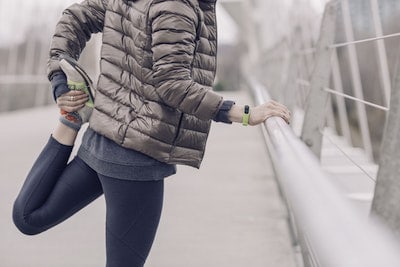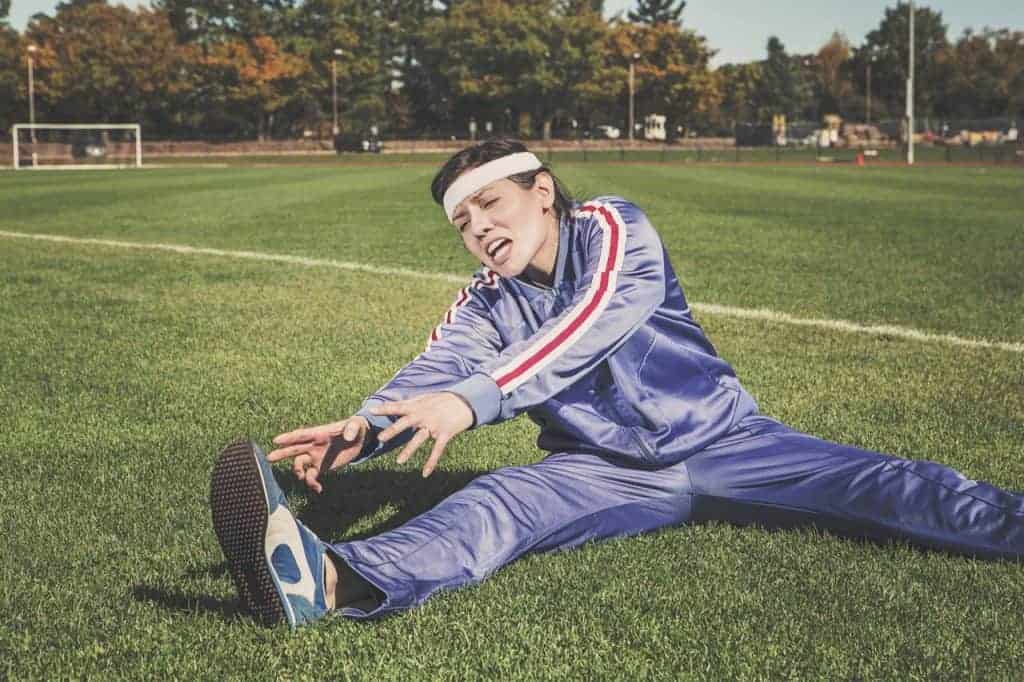
Warming up for sports—why bother?
“Warm-ups have the ability to help prepare the muscles for activity. However, what’s changed is that we now question many ‘traditional’ warm-up methods; evidence suggests that static stretching probably shouldn’t be part of most people’s warm up routine,” says founder of A Step Ahead Foot + Ankle Care Dr Brenden Brown.
“The days of a few quick hamstring stretches followed by a run around the field are long gone. Modern warm-ups are more cleverly designed; they need to be more specific to the sport we’re playing or the activity we’re embarking on.”

The benefits of warm-ups
“Preparing the body for participation in sports by warming up, will enhance the maximal performance and reduce the risk of injury! This is a sentence I often find myself repeating over and over again to my young patients,” says Dr Brenden.
“The Netball World Cup was a great example of how warming up is directly linked to injury prevention and optimum performance. The public was able to see first hand the amount of time the best teams in the world spend on warming up before games.
“Warming up improves blood flow to the heart, increases the muscle temperature and makes muscles more pliable.
“Cold or less pliable or elastic muscle works harder to accommodate a given load and will be more resistant to sudden stretch. Less pliable muscle tissue is also more susceptible to overuse injuries.
“No matter what the sport or activity is, players can begin their warm-up by walking a couple of laps of the soccer field or court. Increase the pace on the second lap to turn it in to a brisk walk but don’t jog or run.
“As you walk you’re infusing the tissue and muscles with blood to gently warm up the body. At the end of a gentle warm-up your muscles are ready to be used.”
The ‘right’ kind of netball warm-up
“I continue to see kids doing two types of warm-ups. They either run from one end of the netball court to the other and that’s it or they go back to the classic—are dare I say outdated—routine involving calf stretches, hamstring stretches, touching toes and throwing the ball into the hoop.
“If we take netball as an example, the warm-ups need to be specific to the sport. Most netballers need to be doing lots of side-to-side movements, twists, turning and cutting movements.
“This might include doing the grapevine across the court, side-to-side stepping, moving up to side-to-side hoping and jumping. Standing still, pointing the toe and rotating the ankle is also useful as part of a warm-up.
“The warm-up routine needn’t take half an hour but it should take approximately 10-15 minutes.”

To stretch or not to stretch—this is the question!
Dr Brenden explains, “By stretching out a muscle and holding it there (static stretching) we’re pushing the tissue past where it needs to go, which could do more harm than good.
“This type of stretching is also not sports specific. However, stretching doesn’t always mean stretching out a muscle and holding it there.
“Dynamic stretches differ from the norm in that they stretch the body through movement. So instead of holding the muscle in a static stretched-out position, you move gradually through the movement.
“At best, I’d call this a light stretch. There should be no risk of over-stretching the muscles.”
8 reasons to warm up
- Increases range of movement
- Warms up muscles in prepares for activity
- Increases fluid production to lubricate joints
- Triggers the neural pathways between your brain and your muscles
- Improves reaction and response time
- Reduces risk of injury
- Potential to improve performance
- Helps improve recovery time
Related articles:
Winter sports’ greatest enemy….ankle sprain
Your guide to rock-solid ankle stability
A Step Ahead Foot + Ankle Care is one of Sydney’s leading foot and ankle clinics. Principal podiatrist and founder of A Step Ahead Dr Brenden Brown (AKA Dr Foot) has been taking care of people’s feet for more than 20 years.
With a background in sports medicine and having served as a former president of the Australasian Podiatry Council, Brenden is a wealth of information when it comes to foot and ankle care.




 Dr Brenden’s White paper report on the “6 Reasons You Won’t Beat Heal Pain” outlines what’s stopping you from beating this and tips on how to stop it in its tracks!
Dr Brenden’s White paper report on the “6 Reasons You Won’t Beat Heal Pain” outlines what’s stopping you from beating this and tips on how to stop it in its tracks!